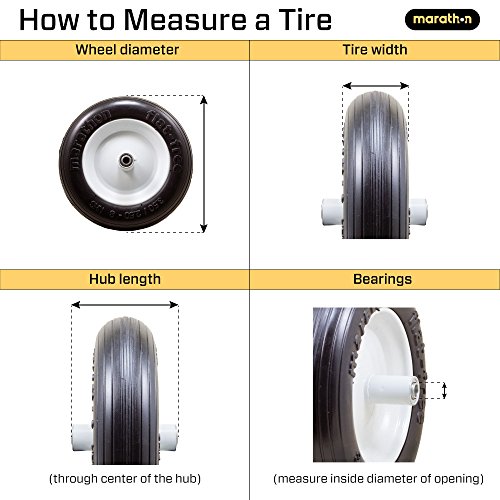Is your kid’s power wheel struggling to make it down the driveway? Its wheels are probably near the end of their life and can’t take it anymore. But it doesn’t mean you have to replace the whole unit. You can improve its drivability and bring it back to life by changing the toy car’s tires with new ones.
Tires lose their traction after repeated use. You can tell this when the power wheel starts slipping on some surfaces. Obvious cracks and signs of worn-out wear also require replacement. Another reason for slippery tires that can break is because plastic tires are mainly used in ride-on vehicles. So, parents might want to put rubber tires on power wheels even if the plastic tires are still in good condition.
This task can be new to some, and after searching ‘how to replace power wheels tires,’ you find yourself here. We will put your mind at ease with a simple step-by-step tutorial. It will take only a few hours of your time from preparing the needed tools to carrying out the actual process.
Table of Contents
Most ride-on vehicles have the same design, but this doesn’t mean that their parts are interchangeable. Before the power wheels tire replacement, make sure to consider the size, thickness, diameter, and thread of the replacement part. We have two tutorials, one for plastic tires and the other for rubber tires.
What you’ll need:
Choose a spacious area for convenience. Elevate or turn the vehicle upright on the rear so it is easier to access the wheels. Make sure that it is steady.
Remove the retainer caps. Slip the flat screwdriver between the lid and the hubcap to lift off the retainer cap.
Slip the flat screwdriver between the lid and the hubcap to lift off the retainer cap.
Take off all the tires and place them in a separate location to avoid mix-ups. Clean the axles with a wet cloth.
Take one new tire at a time and attach them in place. Install the hubcap then the new retainers after placing the wheel in place. The hammer will help push the parts in place but use moderate force to prevent breaking the pieces.
Check the wheels to ensure they are stable when the power wheel is on the ground. Let your kid take it for a test drive while you are watching. See if the wheels are spinning well.
What you’ll need:
Overturn the ride-on vehicle to have easy access to the wheels.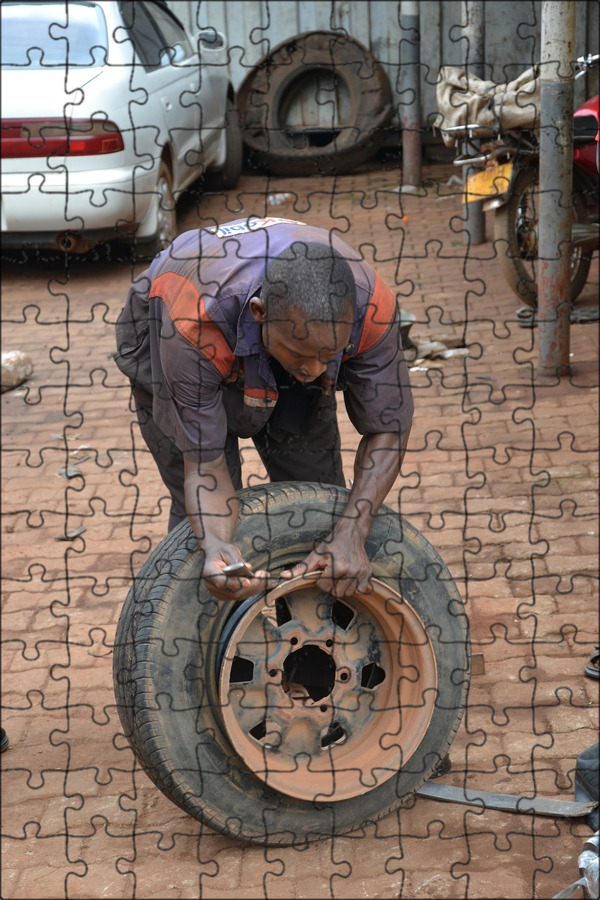 Clean the tires of any debris, grass, and mud.
Clean the tires of any debris, grass, and mud.
Cut the bicycle tires and remove their side walls evenly with a scissor. Wear gloves to help avoid injuries.
Set the bike tires on the plastic tires of the power wheel. Drill two to three screws on the surface. Then, stretch the rubber tire covering the entire plastic tire. After making sure that the tire is not sagging, drill the screws again.
Turn the power wheel the right way and check the wheels. Let your kid take it for a test drive under your supervision.
There can be a slight difference in the set of instructions since each powered wheel is designed and built differently. Some ride-on cars have a plastic cap concealing the center nut. Others do not have a push nut that you can hammer back on, so you might need to use a different tool to reattach the piece.
There are several commonly asked questions about power wheels problems solutions, especially regarding tire issues and replacement. Here, we have compiled some of them and provided helpful answers.
Here, we have compiled some of them and provided helpful answers.
Yes. Rubber tires are better than plastic tires since they provide enhanced traction on most terrains. Rubber tires can also significantly improve the overall performance of the power wheel.
When you start to notice cracks or bent parts on the outer cover of the wheel, it may be time to replace the tires. Other indications include poor traction due to worn-out thread and off-balance. If your kid happens to run over a nail while driving their toy car, the tires will need replacement.
No. Each model and brand manufactures specific tires for their power wheels, which come in a unique build. When choosing new tires, it is crucial to opt for one compatible with your child’s unit. Otherwise, it will alter the performance of the ride-on vehicle.
Yes. Several parties independently produce replacement tires for ride-on vehicles at an affordable price. But they are not as good as the ones sold by original manufacturers. Besides, you need to modify the cheap replacement tires, unlike the ones from the manufacturer of the power wheel, where the tires have accurate specifications for a smooth replacement process.
Yes. You can make upgrades on your toddler’s power wheels by adding a well-treaded rubber tire on the plastic surface of the plastic tires. It can improve the overall grip of the tires and provide prolonged traction.
The best replacement tires for power wheels differ depending on the brand and the model of the ride-on vehicle.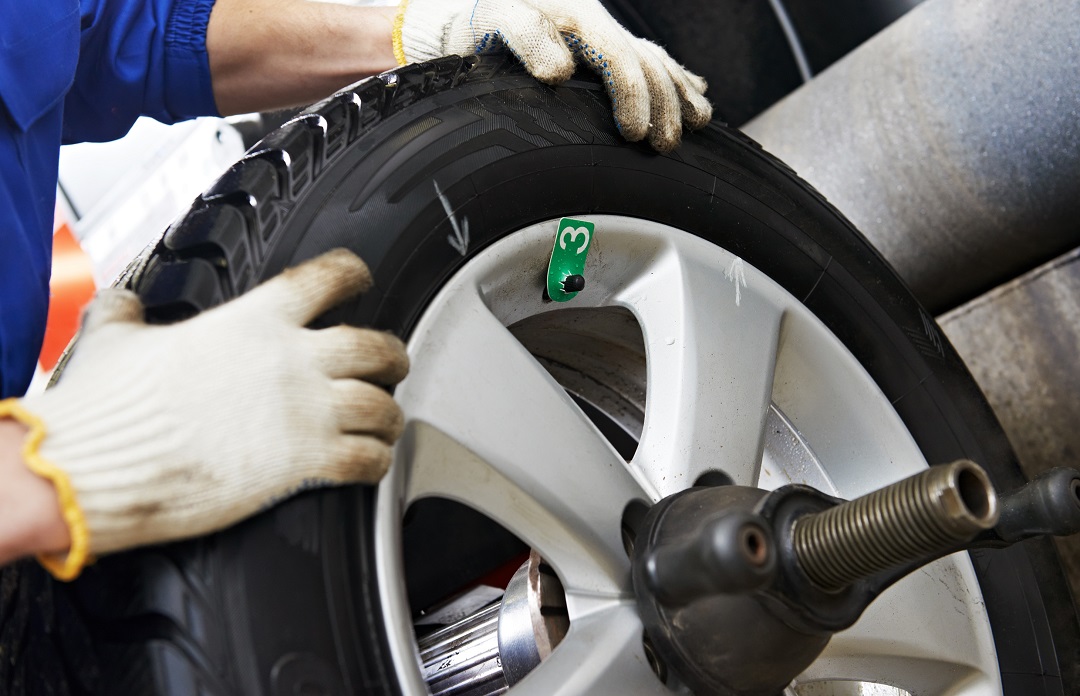 There are several high-quality replacement tires on the market, and we have some of them below.
There are several high-quality replacement tires on the market, and we have some of them below.
This is a set of two replacement rear wheels manufactured specifically for its John Deere Gator ride-on vehicle. It is compatible with four models of this power wheel. The tires weigh seven pounds and fit perfectly for the units listed in the product description.
This all-terrain tire features an aggressive and stunning wheel and tire design. It has an ultimate bashing set-up and molded-in bead-loc ring for the scale look. The wheel size is 3.8 inches and is fixed.
This set of air tires has a 5/8 inches diameter hole and double-sealed bearings. It is ready to install and works as an ideal replacement for power wheels and hand trucks. The rubber is high-quality and heavy-duty, so you can expect it to last a long time of use.
The rubber is high-quality and heavy-duty, so you can expect it to last a long time of use.
Replacing your child’s ride-on vehicle tires is easier than you might think. It can be a fun DIY project for parents who have some spare time and patience. As long as you have the right tools and power wheels replacement wheels, you can complete the task in a breeze. You can opt for a plastic or rubber tire upgrade, depending on your preference.
Aside from the tutorial and FAQ section, we also added some tire replacement products for you to consider. We hope this article on how to replace power wheels tires can help you get your toddler back in the driver’s seat with better tires that can take on all terrains. If you know someone who needs this information, shares the content with them. Leave your comments below. We love hearing from you
Power wheels may require minor repairs or replacement from time to time.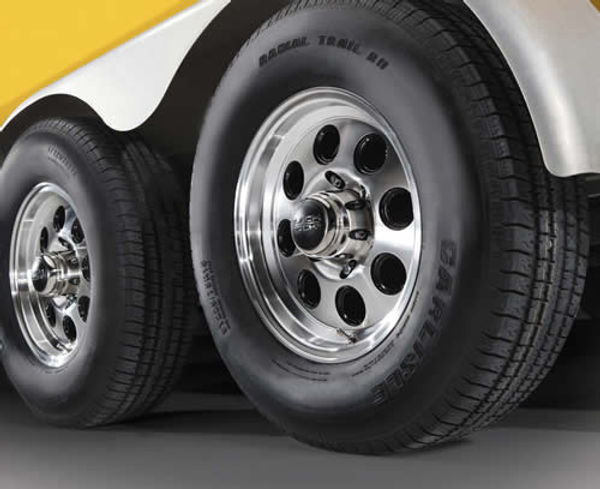 With time, tires of the power wheels start to lose traction, which requires replacing tires for safe driving.
With time, tires of the power wheels start to lose traction, which requires replacing tires for safe driving.
When you increase the speed of your power wheels, it implies that the power wheels require more traction. You may need to change the plastic tires to rubber tires, because many models utilize plastic tires, and the rubber tires can enhance traction.
Replacing tires is an easy step-by-step process. You don’t need much money, effort, and time to do that. If you don’t know about the process of replacing tires, don’t worry! And keep reading this article to know about that.
How to replace tires on Power Wheels:
Table of Contents
1
There are few alert points which means it is the time that you need to change the tires of your power wheels.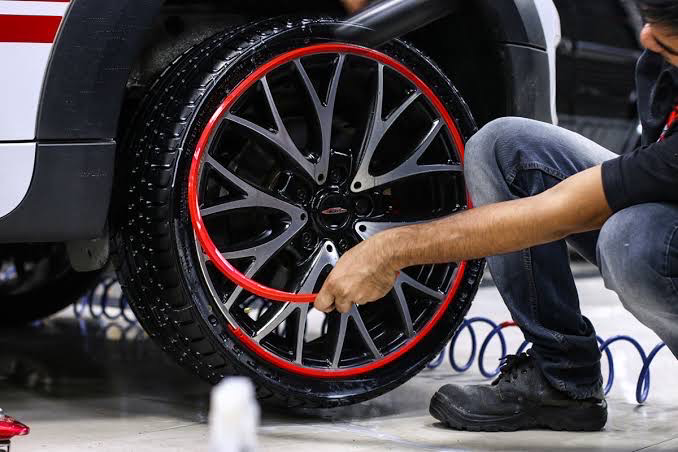
You have to prepare the following tools and hardware before starting to replace the tires.

Replacing tires in a power is an easy job. It is different from changing car tires. You don’t need a handyman’s services to replace the tires of power wheels. Let’s have a look at the step-by-step guide of replacing the tires of power wheels.
Find a Good Space to Work.You need quite a big space where you can start changing. The space should be a solid and flat surface, which will prevent the power wheel from rolling. Place all the tools and hardware in place.
Remove the BatteryWhenever working with power wheels, it is recommended to remove the battery to prevent safety hazards.
Changing tires involves a hammer and other tools that require force on the power wheels, which can sometimes damage the battery.
You may also have to flip the car for better access. It is better to remove the battery and put it in a safe place.
Flip the Power WheelsFlip the car to get access to the bottom part; this will give you access to all four wheels. You should do it carefully, so the other parts in the vehicle are not damaged.
An alternative to flipping the power wheels is to lift the vehicle onto something with the tires free, this may damage the plastic parts of the vehicle so instead of lifting the vehicle, we go with flipping the power wheels.
Start Removing the Wheel PartsOnce you flipped the car correctly. Now start removing the hubcaps, inserts, and retainers. Use a flat face screwdriver and put it between the retainer and hubcaps to remove the retainer cap.
You may need to use more effort and repeat the process because in some power wheels it’s difficult to remove the retainer cap.
Retainers and hubcaps are the parts of the rim of the power wheels which are connected to the tire and required to be removed to remove the tire. Not all power wheels have retainers.
Inserts are little plastic pieces that insert into the wheel.
Remove the Old Set of TiresAfter removing the retainer cap and hubcaps, it will be easy to remove the tires. Just remove the four tires and put them aside, away from the new tires.
After removing the tires, you can see the axles, clean the axels with the cleaning detergent and a rag
Install One Tire First Then Repeat for OthersInstall the first tire to check if it fits perfectly. Take a tire and push in a plastic insert if required. Mount the new tire on one of the front wheels. Take a hubcap and install it after the tire. You need to use some force or maybe use the hammer without breaking the plastic parts.
Install the new retainers to hold the hubcaps. You may need to hit it with a hammer a few times to get the retainer into place. Once it is in place, you can install the retainer caps.
You may need to hit it with a hammer a few times to get the retainer into place. Once it is in place, you can install the retainer caps.
Once you fit the first tire, repeat the process with the other three tires.
Check Everything and Test DriveCheck everything in the wheels and tires to make sure every part is fitted correctly, and you have tightened everything so no part will not come off when your kid is driving the car.
Install the battery back into the car.
Test drive the power wheels with a remote or by hand before allowing your kid to drive. After the test drive check that all nuts remain tight. Do so again after a 2-3 hours of usage.
Power wheels tires are widely available in the market. You can buy tires for any model of power wheels. Most of the time, you can also find rubber tires for your model.
Tires are provided by the power wheels brands and also by some other companies. Tires from other companies are relatively cheaper than branded tires. You can buy the tires from the market or online stores on Amazon, MLToys, and eBay.
You can buy the tires from the market or online stores on Amazon, MLToys, and eBay.
The branded power wheels tires will cost $24 to $36 a pair. If you want cheaper, you can find the tires from other companies, which are relatively cheaper than branded tires. The copy tires can cost up to half of the branded tire’s prices.
If you want to replace plastic tires with rubber tires, mostly if the power wheels do not have stock rubber tires, the brand will not provide rubber tires for replacement, but you can always find rubber tires from other companies and relatively cheaper than stock or branded plastic tires.
It will take around 30-60 minutes to replace the tires of power wheels when you have everything required for the tire replacement.
Safety is the first reason why parents want to change the tires of their kid’s power wheel, to increase the traction so the brakes will work without wheels sliding, and the child can enjoy a safe environment.
Branded tires have the guarantee of working perfectly as the stock tires, so they are safe. The tires from other companies do not have that guarantee, but usually, they work fine.
The tires from other companies do not have that guarantee, but usually, they work fine.
If you install tires from other companies, you may need to check the tires frequently to see if they are working correctly and not getting cracked.
Are Power Wheels Tires Interchangeable?No power wheel tires are not interchangeable. If you wish to change the tires in your power wheels, you must choose the exact model of tire that is matched to your power wheels.
By using tires for a different model of power wheels, you risk damaging your vehicle. This is because the diameter of the tires is different; thus, it changes the ratio to the motor.
By running a different size ratio than what’s in your power wheels, you can overheat and possibly burn out the motor.
Other problems may also appear if you use the wrong model wheels, this could be stripped gears, excess wobbling, or steering issues.
There are some facts which you need to know before tire replacement; maybe you can add something more into replacing tires:
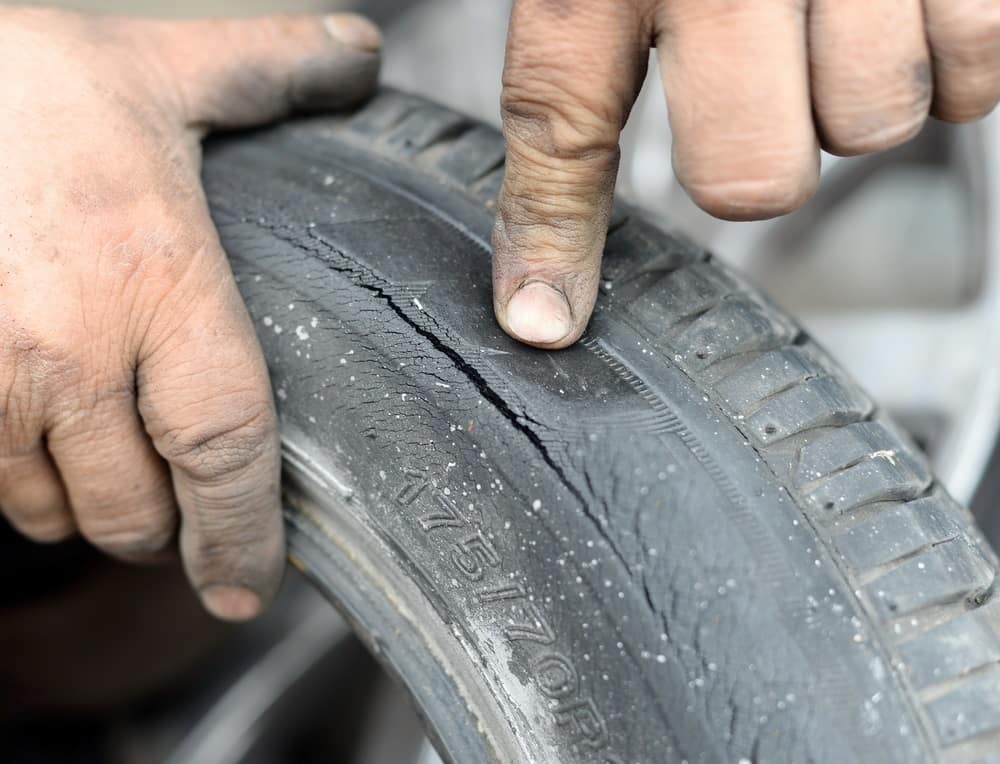
When your kids are playing with their power wheels, you always want them to be safe. With time, tires become flat or bald, which is a safety hazard for your child because the car will lose traction, and the brakes will not work properly. Replacing the expired tires is recommended.
You can always replace the tires easily at home with very few tools, and parents don’t need to get professional handyman’s services.
By following the steps and facts provided in this article, parents can replace the tires at a low cost and 30-60 minutes.
If your kid’s power wheels have flat or bald tires, follow this article’s process and replace the tire to make your kid’s drive safer and have a better experience.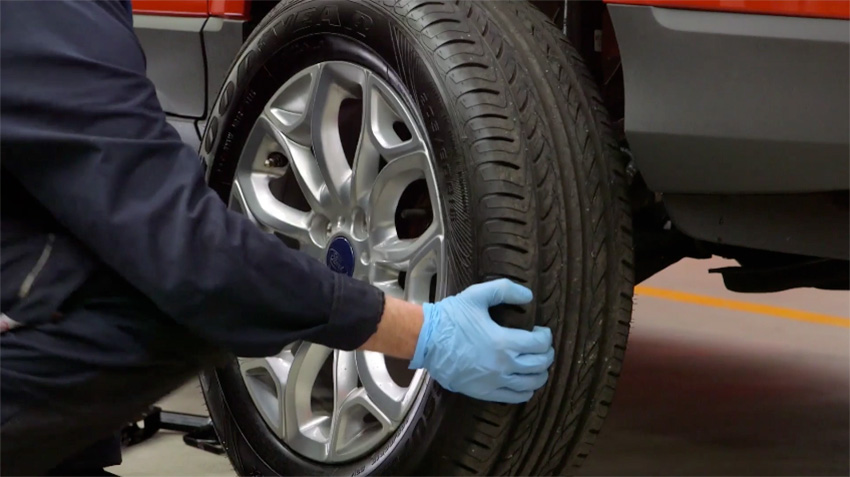
Changing tires on a vehicle is necessary at least twice a year. This is at best when you only need to change summer and winter options. Additional replacement is carried out when buying a new rubber, as well as when the old one is damaged. Nobody is immune from this.
Many motorists turn to car services, which means additional expenditure of money and time. Significant savings will be obtained if you learn how to change tires yourself, without resorting to the help of third-party organizations. Stock up on the following:
The listed tools should always be present in the road arsenal of every motorist. No one knows when the need to replace a tire will arise.
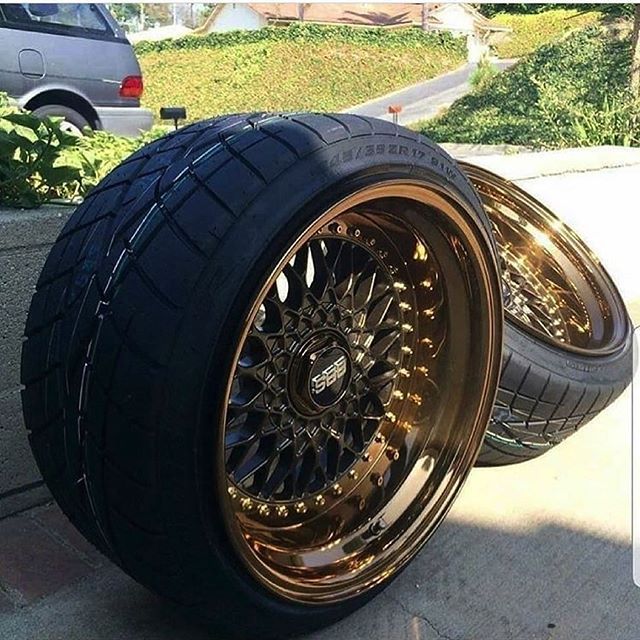 When the car has taken a position convenient for you, you can begin to remove the wheel. To do this, it is enough to unscrew the fastening bolts with a wheelbrace.
When the car has taken a position convenient for you, you can begin to remove the wheel. To do this, it is enough to unscrew the fastening bolts with a wheelbrace. Now it's time to fit the rim with the new tire. Before installation, be sure to examine its surface for damage. Check tire and rim size again. Examine the disk in the same way. It may also need to be replaced. Tire manufacturers put marks on them, with which you can decide in which direction you need to rotate. It is recommended to lubricate the tire bead with a special compound. This allows you to install them more accurately and efficiently. If there is no lubricant, then you can replace it with soapy water.
Before installation, be sure to examine its surface for damage. Check tire and rim size again. Examine the disk in the same way. It may also need to be replaced. Tire manufacturers put marks on them, with which you can decide in which direction you need to rotate. It is recommended to lubricate the tire bead with a special compound. This allows you to install them more accurately and efficiently. If there is no lubricant, then you can replace it with soapy water.
Further, your actions should go exactly the opposite. First of all, put one of the sidewalls on the rim. When mounting the tire with the camera, you need to insert the camera. Only after the valve enters the hole, you can put on another sidewall.

Practical and durable Hankook tires in Belarus can be purchased at LLC "Loyal". All important information is located on the website https://colesa.by/. Calling by phone: +375 (29) 6-305-605 , you can ask questions, as well as get help in choosing the most optimal tire option for you.
The company's product range includes a wide range of tires from various domestic and international manufacturers. Payment and delivery are carried out in various ways. You can choose the most convenient one.
You can choose the most convenient one.
Konstantin Ishchenko
experienced motorist
A lot depends on the condition of the suspension, springs and shock absorbers, but tires provide direct grip. Wrong or worn tires can cause accidents. In this article, we will tell you how to avoid this.
In spring - from winter to summer. There are no strict requirements in the regulatory documents: it is recommended to use winter tires from December to February, and summer tires from June to August. There are requirements for studded tires: they cannot be used from the first of June - for this they can be warned or fined 500 R. From winter to summer, they change shoes at an average daily temperature above +7 ° C. After this mark, winter tires wear out quickly and hold the road poorly.
There are no strict requirements in the regulatory documents: it is recommended to use winter tires from December to February, and summer tires from June to August. There are requirements for studded tires: they cannot be used from the first of June - for this they can be warned or fined 500 R. From winter to summer, they change shoes at an average daily temperature above +7 ° C. After this mark, winter tires wear out quickly and hold the road poorly.
Rules of the Customs Union "On the safety of wheeled vehicles"
In autumn - from summer to winter. It's time to change tires if the average daily temperature drops below +10 °C: summer tires become dull, grip becomes worse. In autumn, it is much more difficult to sign up for a tire fitting: the closer the frost, the longer the appointment. People are afraid of ice, the prospect of hitting someone else's car or flying into a ditch.
What to do? 02/21/20
Wheels scratched in my car service
Car tires are a consumable item. In addition to seasonal replacement, it is important to replace them as soon as they are worn out or seriously damaged.
In addition to seasonal replacement, it is important to replace them as soon as they are worn out or seriously damaged.
When the tire is worn. Each car tire has a wear indicator - a special jumper between the tread islands. As soon as the tread wears off and matches the level of at least one of the indicator jumpers, it's time to change the tire. Such a tire is dangerous, especially on wet surfaces.
/car service/
How to save on the operation of the machine
Insufficiently high tread poorly removes water from the contact patch of the tire with the roadway. Where you can confidently drive 70–80 km/h on new tires, on worn tires you can lose control of the car already at a speed of 55–60 km/h.
Indicator bar on a tire that has been through a season and a half Some manufacturers apply their own wear indicators in addition to the standard ones. For example, on Nokian tires, numbers are cut in the middle of the tread: the larger the number, the deeper the cut.
A relatively new tire will have a lot of numbers, a worn one or two will remain - the rest will be erased. A drop with a cross is applied to the sidewall of the Continental tire. As soon as it is worn down to half, the tire should be considered worn out and replaced. But all these are rather exceptions - most tires do not have such indicators.
Wear may be uneven. If the tire has been inflated, the center of the tread will be worn off. If the tire pressure was too low, it will be relatively fresh and the sidewalls of the tread will be worn out.
Non-standard wear indicators. From left to right: Nokian with numbers - summer and winter, Continental summer - with a drop and a cross Tire that was pumped over: wear on the central part of the tread is much stronger It also happens that either the inner or outer side of the tread wears out on one wheel. This means that the camber is broken - the angle of the wheel relative to the vertical plane. In this case, it is important to sign up for wheel alignment - this is a service during which the wheel alignment angles are adjusted.
It happens that the angles of the wheels are not adjusted. For example, if the car has been in a serious accident and its power parts of the body or suspension parts are deformed. In this case, you will have to eliminate these malfunctions, and then go to the wheel alignment stand again.
/sud-autoservice/
As I sued the auto service
Sawtooth or comb wear occurs on winter tires if the toe-in is broken - the angle of the wheel position in the horizontal plane. Sign up for a wheel alignment so that the same wear does not appear on the new tire.
Uneven tread wear. The tire was on a wheel with unadjusted camber Comb-shaped tread wear. Source: mashintop.ru When the tire is damaged and it is noticeable. It is easy enough to damage a tire: cut the sidewall, run into a piece of reinforcement or get hit, in place of which a hernia will come out. All sidewall damage is a good reason to buy a new tire: repairs will be expensive and ineffective.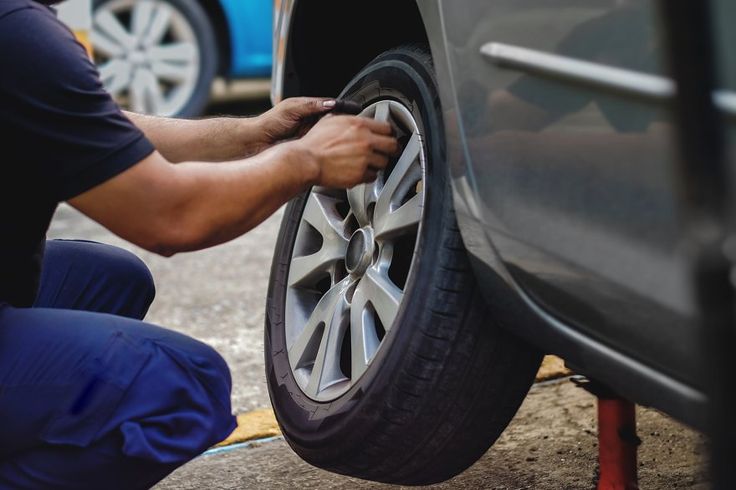 Damage to the working part of the tire - the tread - is less critical.
Damage to the working part of the tire - the tread - is less critical.
When damage is present but not visible. Hidden damage may appear on the back of the wheel. For example, a driver caught a hole, felt a good hit, got out, saw that everything was in order, and drove on. And on the reverse side, a piece of rubber was torn out and the cord became visible - the metal carcass of the tire. Such damages are found only when inspecting the chassis or at a tire fitting, and this is bad: they can cause an accident or serious damage to the car.
Service life of car tires. The tire life recommended by most manufacturers is five years, but this does not mean that they cannot be used for the sixth year. The expiration date is not limited by any documents.
GOST R 52900-2007
Tire manufacturers estimate tire service life differently. Nokian provided the most detailed explanation: “Tire life is not defined by law, but tires can only be considered new if they have been manufactured within the last five years.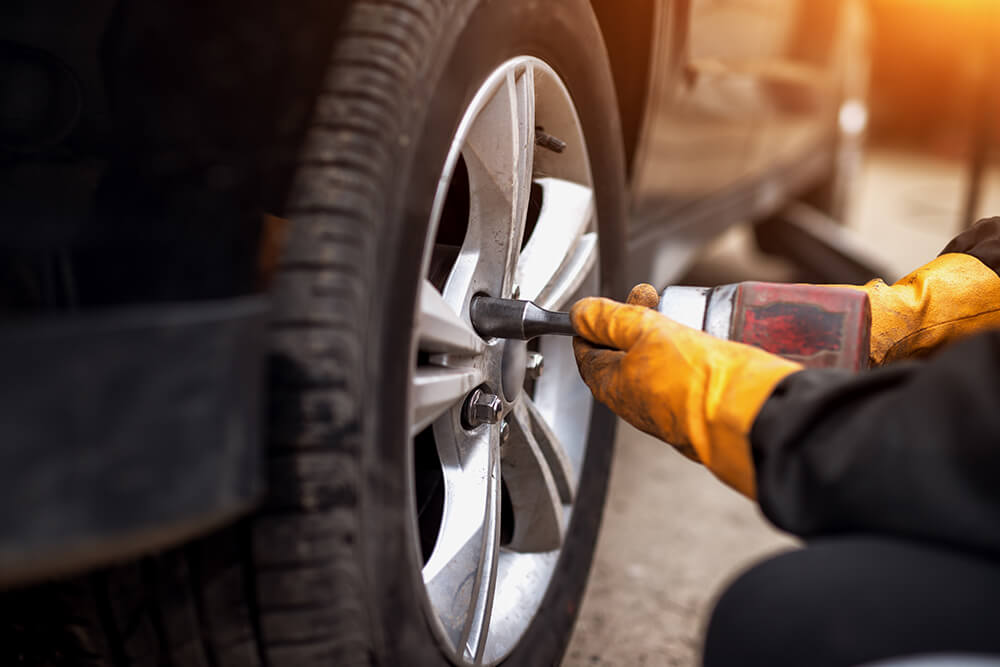 The recommended tire life is 6 years and the maximum is 10 years. Then the tire loses its consumer properties: grip deteriorates, vibration may appear on the body or steering wheel.
The recommended tire life is 6 years and the maximum is 10 years. Then the tire loses its consumer properties: grip deteriorates, vibration may appear on the body or steering wheel.
5 years
Tire life recommended by most manufacturers
Storage location - less than a meter away from direct sunlight and heaters. In the sun, near the battery and in the rain, the tire will quickly lose its properties: the rubber will dry out and collapse. Permissible temperature - from -30 to +35 ° C, humidity - 50-80%. Do not leave the wheels dirty; they must be thoroughly washed before seasonal storage. Tires can be stored under a canopy in the open air for no more than a month.
GOST 54266-2010
The method of storage depends on the set: either tires separately or wheels as an assembly. Tires up to 205 mm wide can be stored in even stacks up to 2 m high. Tires from 210 mm are stored vertically - on edge.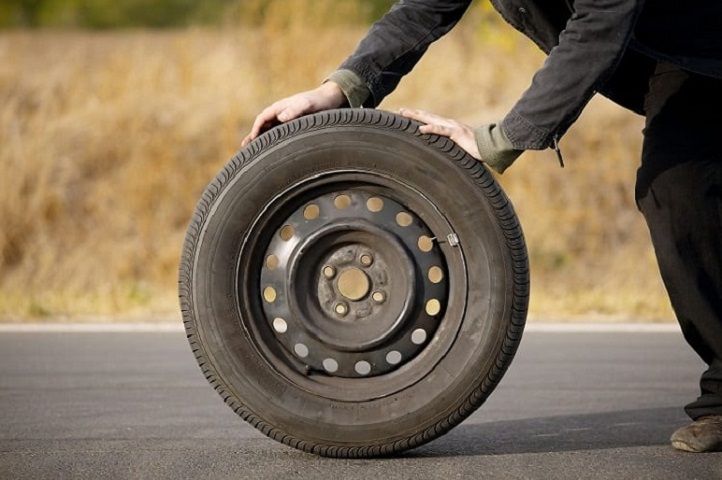 Every three months, all tires, regardless of width, should be rotated to change the footprint.
Every three months, all tires, regardless of width, should be rotated to change the footprint.
GOST does not explain how to store the wheels as an assembly, but Nokian has a visual manual for storage. Continental recommends hanging wheels by rims or storing them in a stack, similar to tires, turning them over every 4 weeks. It is advisable to reduce the air pressure in the tire to 1-1.5 atm and not make stacks of wheels - a tire plus a disk - more than four pieces.
Nokian Tire Storage TipsPDF, 2.1 MB
Featured Articles for Motorists
How to drive without fines and not overpay for car maintenance - in our mailing list along with other materials about money
First of all, you need to decide which tires are suitable. All important characteristics are written on the sidewall of the tire.
The size of the tire is important to consider when selecting it for a specific car and rim. All options provided for by the design of the car are written on special plates.
All options provided for by the design of the car are written on special plates.
Depending on the brand of car, they can be found on the gas tank flap or on the B-pillar in the driver's doorway. The recommended tire pressure is also written here.
/usedcar/
How to buy a used car
Decal with Mini John Cooper Works tire parameters in the doorway: size and recommended pressure at different loads Decal on the gas tank flap Skoda OctaviaTire sizes are indicated in the format xxx / xx Rx. They are on the sidewall of the tire.
The first parameter is the tread width in mm. The size step is 10 mm, always 5 at the end. Next is the tire profile, or its height as a percentage relative to the width. The width of a tire with parameters 235/55/R16 is approximately 129 mm, and for a tire 195/55/R16 it is 107 mm.
R - an indication of the type of tire, in this case, that it is radial. There are also diagonal ones, but this is an outdated design. These have not been used for cars for a long time. The difference is in the design of the cord. A popular misconception is that R is a radius.
These have not been used for cars for a long time. The difference is in the design of the cord. A popular misconception is that R is a radius.
The last two digits are the diameter of the rim in inches, on which the tire can be placed.
It is undesirable to deviate from the tire parameters recommended by the car manufacturer. This can adversely affect handling, as well as cause the tire to rub against the wheel arch or suspension parts: this will damage the tire and increase the likelihood of an accident.
It happens that on the front and rear axles from the factory there are disks for rubber of different sizes. Usually we are talking about the width - the rear wheels can be wider than the front. In the people, such a set of disks is called a different-wide one.
Tube or tubeless construction. Previously, a car wheel consisted of three main parts: a disc, a tube, and a tire. The tire was responsible only for traction and overall strength, the chamber was a container for air. This design had serious drawbacks:
This design had serious drawbacks:
Now you can find a tube tire on a car only in a museum or in your grandfather's garage: the technology is outdated.
Modern tubeless tires do not have these drawbacks. Special protrusions in the disks — hubs, for which the tire clings, help to maintain the tightness of the tubeless wheel.
Manufacturers still mark tubeless tires with a special tubeless mark, and those intended for use with a tube - tube type, but now these are only rare domestic models Cord construction type. Each tire is multi-layered, a single rubber product will not be able to provide the desired shape and strength.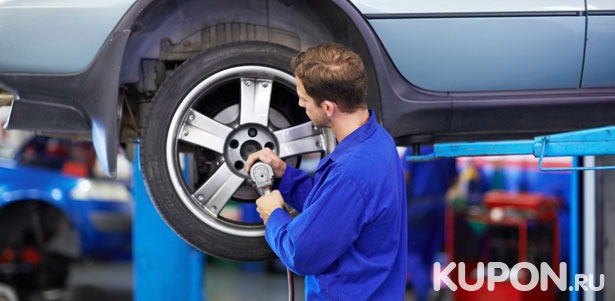 Therefore, inside the tire there is a cord - a kind of carcass. The cord can be metal, synthetic fibers or textile threads. According to the method of laying the cord, tires are divided into radial and diagonal.
Therefore, inside the tire there is a cord - a kind of carcass. The cord can be metal, synthetic fibers or textile threads. According to the method of laying the cord, tires are divided into radial and diagonal.
| Bias tire | Radial tire |
|---|---|
| 2 or more cords | 1 ply cord |
| Smaller footprint | Larger road contact patch |
| Tire heavier than | Lighter tire |
| Used on commercial vehicles | Used on passenger cars |
| Cheaper than | Expensive |
Bias
Radial tire
2 ply or more
1 ply
Smaller footprint
Larger footprint
Heavier tire
lighter tire 900 2 Used on commercial vehiclesUsed on passenger cars
Cheaper
More expensive
Radial tire cords are parallel to the wheel circumference, on top of each other.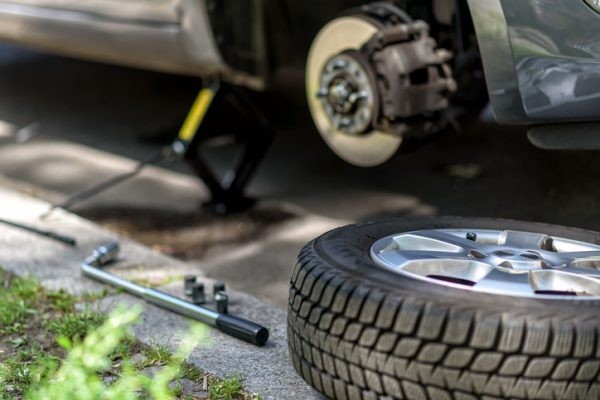 For diagonal tires, the cord layers overlap each other diagonally. Source: Kolobox
For diagonal tires, the cord layers overlap each other diagonally. Source: Kolobox DOT marking. The name comes from the American Department of Transportation - an analogue of our Department of Transportation. In 1978, this department approved mandatory labeling for all automobile tires, which includes Treadwear, Traction, and Temperature grades marked on the sidewall. Now most manufacturers use this system, selling tires without such marking is illegal in the USA.
Treadwear. Some people want tires to last as long as possible, others want good grip. So far, these qualities have not been learned to combine in one tire.
The wear rate of a tire is indicated by the Treadwear index. Typically, for products for passenger cars, this parameter ranges from 100 to 600. In terms of kilometers, this is approximately 10,000-15,000 km per hundred points. For example, index 240 corresponds to 24,000-36,000 km. At the end of the range there will be tires that were used with a calm driving style.
At the end of the range there will be tires that were used with a calm driving style.
Traction also shows the grip class, but unlike Russian traffic rules and technical regulations, the classification is based not on distance in meters, but on the deceleration coefficient - G, which the tire can provide. According to Traction, all tires are divided into classes according to their ability to effectively stop a car on wet asphalt and concrete: from the best AA to the worst C.
| Class | G on asphalt | G on concrete |
|---|---|---|
| AA | More than 0.54 m/s² | 0.38 m/s² |
| A | More than 0.47 m/s² | 0.35 m/s² |
| B | More than 0.38 m/s² | 0.26 m/s² |
| C | Less than 0.38 m/s² | 0.26 m/s² |
Grade AA
G on asphalt
More than 0.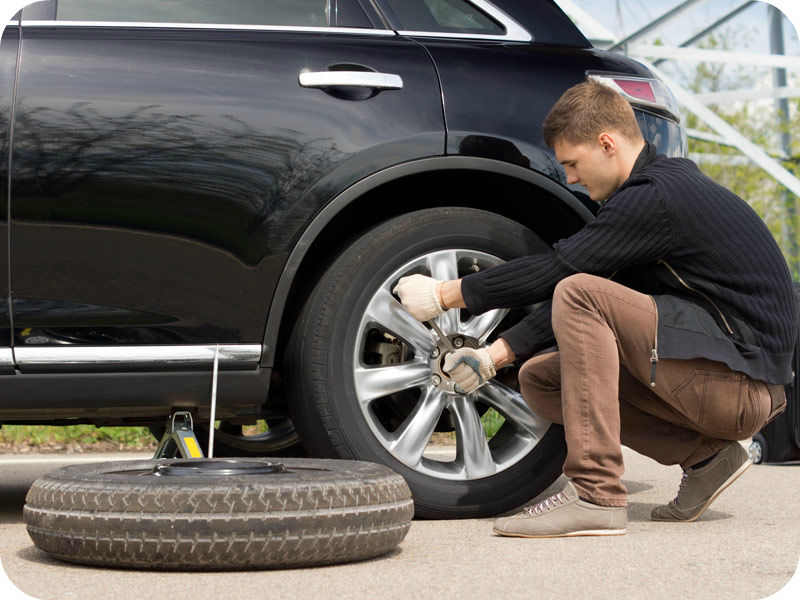 54 m/s²
54 m/s²
G on concrete
0.38 m/s²
Class A
G on asphalt
More than 0.47 m/s²
G on concrete
0.35 m/s²
Class B 02 G on asphalt
Over 0.38 m/s²
G on concrete
0.26 m/s²
Class C
G on asphalt
Less than 0.38 m/s²
on concrete 2 0.26 m/s²
Temperature curve, Temperature. All tires are divided into three classes according to the resistance to heat generation during movement: A, B and C. Class A tires effectively remove heat at speeds over 185 km / h, class B - from 160 to 185 km / h, class C - from 137 up to 160 km/h. For passenger cars, there are almost no tires on sale, except for class A.
Run flat. This rubber has a thick and stiff sidewall. It can be driven up to 80 km at speeds up to 80 km/h after a puncture or side cut with a complete loss of pressure.
It is important that the machine is equipped with a tire pressure system, otherwise the driver may not recognize a flat tire, exceed the recommended speed, or drive more than 80 km, which at best will lead to damage to the rim, and at worst, to an accident.
Many vehicles come with runflat tires from the factory. Especially on those who do not have a spare tire. Such tires are 1.5-2 times more expensive than ordinary ones, they make driving less comfortable: due to the hard sidewall, such rubber smooths out bumps much worse and is heavier than conventional tires.
But you don't have to call a tow truck: you can almost always get to the tire shop on your own. If you drive on a relatively flat road, there will be no damage to the alloy wheel: it is still a few centimeters from the road surface.
/otozvali/
How to repair a car under a recall campaign
Load and maximum speed indices. Load Index is a two- or three-digit number that indicates the maximum weight that the tire can support. The speed index is denoted by a Latin letter. It shows the maximum allowable speed that the tire can withstand. All indices are summarized in tables.
| Speed index | Maximum speed, km/h |
|---|---|
| L | 120 |
| M | 130 |
| N | 140 |
| P | 150 |
| Q | 160 |
| R | 170 |
| S | 180 |
| T | 190 |
| U | 200 |
| H | 210 |
| V | 240 |
| W | 270 |
| Y | 300 |
| Z | 300+ |
Speed index
Maximum speed, km/h
If you want to know how to read the load index, find your value in the table.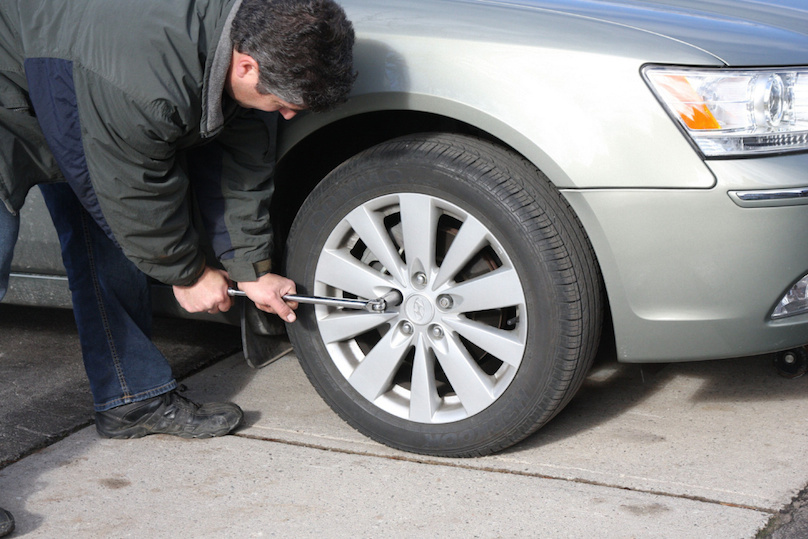
Load index
Weight per tire, kg 3 104 900 105 925 106 950 107 975 108 1000 109 1030 3 003 111 1090 112 1120 113 1150 114 1180 115 1215 116 0003 117 1285 118 1320 119 1360 120 121 1450 122 1500
Load index Weight per tire, kg Load index Weight per tire, kg Load index Weight per tire, kg 62 265 83 487 104 900 63 272 84 500 105 925 64 280 85 515 106 950 65 290 86 530 107 975 66 300 87 545 108 1000 67 307 88 560 109 1030 68 315 89 580 110 1060 69 325 90 600 111 1090 70 335 91 615 112 1120 71 345 92 630 113 1150 72 355 93 650 114 1180 73 365 94 670 115 1215 74 375 95 690 116 1250 75 387 96 710 117 1285 76 400 97 730 118 1320 77 412 98 750 119 1360 78 425 99 775 120 1400 79 437 100 800 121 1450 80 450 101 825 122 1500 81 462 102 850 123 1550 82 475 103 875 124 1600
Pressure index is another name for the load index.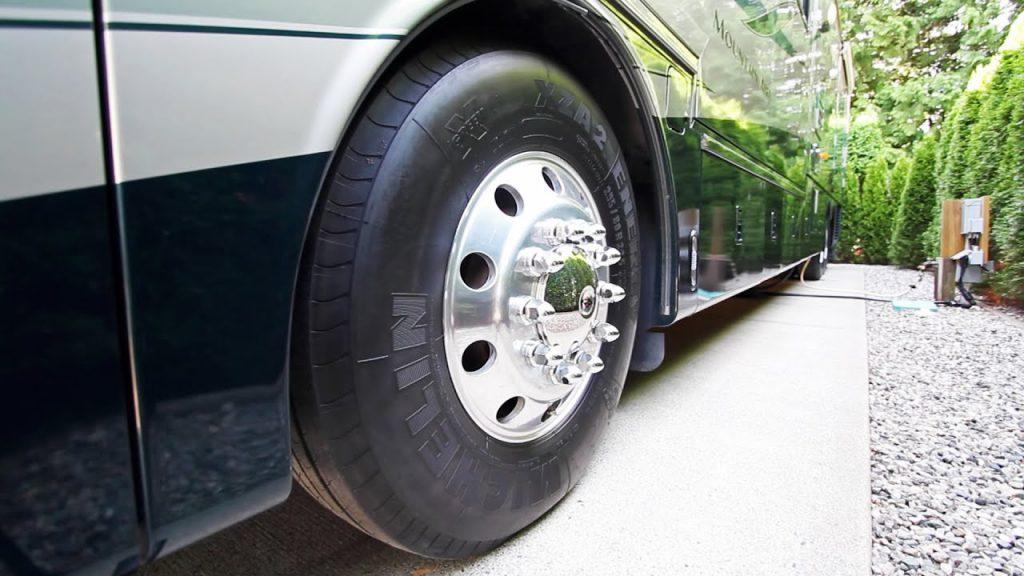
Euro label. Manufacturers put special stickers on tires. They have three parameters that are not written about on the bus itself. These stickers appeared in 2012. Since then, they have been on any tire sold in the EU.
The sticker complies with EC Regulation 1222/2009. This is a complex document with formulas and parameters like rolling resistance - it does not have the usual values like fuel consumption or braking distances. The sticker describes the tire according to three characteristics: noise level, fuel economy class and wet grip class.
/top-economic-cars/
11 economical cars for everyday driving
Noise level shows the noise level in decibels. One black sound wave is 3 or more decibels below the 2016 European norm. Two waves - at the normal level or quieter, but less than 3 decibels. Three - noisy tire, out of limit.
Fuel economy class. A is the most economical.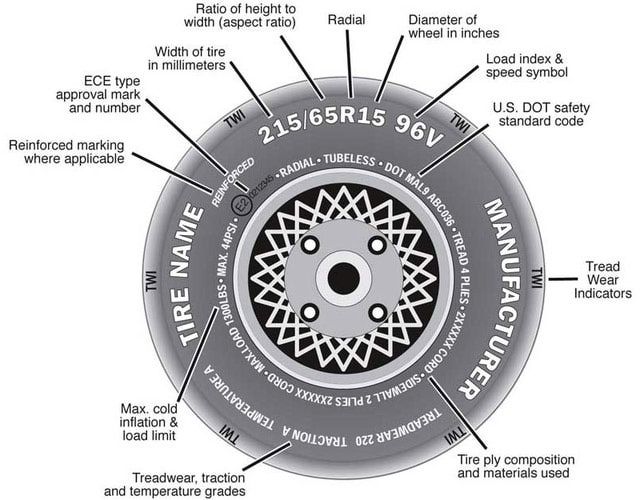 The lower the class, the more the tire resists rolling and the higher the fuel consumption. There is a 7.5% difference in fuel consumption between the most economical class A tire and the most "wasteful" class G. That is, for an average car with a consumption of 10 liters per 100 km and an annual mileage of 25,000 km, class A tires will save up to 187 liters of fuel - 8000 R.
The lower the class, the more the tire resists rolling and the higher the fuel consumption. There is a 7.5% difference in fuel consumption between the most economical class A tire and the most "wasteful" class G. That is, for an average car with a consumption of 10 liters per 100 km and an annual mileage of 25,000 km, class A tires will save up to 187 liters of fuel - 8000 R.
Road grip. Same letters, but without color indication. This estimate was obtained when checking the braking distance on asphalt. The shorter the stopping distance, the closer the letter is to the beginning of the alphabet. The difference between A and G is more than 18 meters: A is the minimum stopping distance, B is plus 3 meters to A, C is plus 7 meters to A, D is plus 10 meters to A, E is plus 12 meters to A, F is plus 18 meters to A.
Sticker on a new tire Color markers on tires. There are another colored stripes on the tire tread - these are technological marks, they are of no use to the buyer. These drawings guide the production line, and they can also show the batch and release date.
These drawings guide the production line, and they can also show the batch and release date.
The most pedantic car owners may try to buy a set of new tires with identical stripes, but it is better to focus on the stamp with the release date on the sidewall.
Features of the choice of all-weather tires. Theoretically, they can be ridden all year round. The rubber compound works in the temperature range from -7 to +15 °C. In severe frosts, rubber hardens like summer tires at temperatures below +10 °C, and in hot weather it becomes softer, like winter tires at temperatures above +7 °C. In any case, all-season tires are not suitable for either hot asphalt or ice ruts.
All-season tires are chosen when they want to save on tire fitting and buying an extra set of tires. This is true for crossovers and SUVs with relatively low annual mileage.
Features of the choice of summer tires.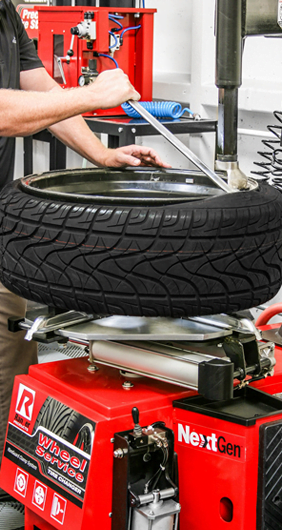 There are models for quiet city driving. Such tires will help save fuel, please with a low noise level and will last three to four seasons. At the same time, they will not tolerate overheating, will not provide perfect grip on the road and will not allow you to drive a car with great comfort.
There are models for quiet city driving. Such tires will help save fuel, please with a low noise level and will last three to four seasons. At the same time, they will not tolerate overheating, will not provide perfect grip on the road and will not allow you to drive a car with great comfort.
The opposite - tires for those who like to push the gas to the floor. Such tires will make noise, increase fuel consumption and wear out in one or two seasons. In return, the driver will get excellent grip and driving pleasure.
Features of the choice of winter tires. There are three types of winter tires.
The studded tires are good for driving on ice and packed snow. They have relatively hard rubber, deep tread and studs. And they also hold the road well on asphalt: the spikes have been hidden in the tread for a long time.
Ideal conditions - ice cover above -15°C. The ice is soft enough for the spikes to grip most effectively.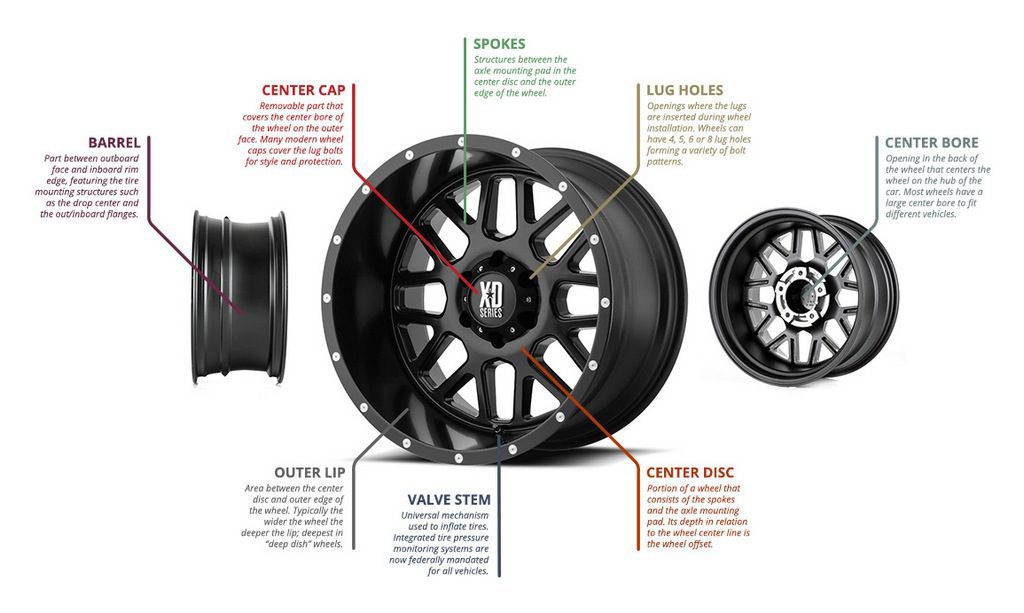
Disadvantages: they are very noisy, they have a low speed index. Usually, you can drive on studded tires no faster than 160-180 km/h. And they are also banned in many European countries because they spoil the asphalt.
Scandinavian style friction tires, aka Velcro, studless and made for harsh winters. Rough tread pattern, soft rubber compound and many sipes - horizontal slots on the islands of the tire tread.
Ideal conditions are snow and ice below -15°C. They are noticeably quieter, you can move at a much higher speed on them.
Disadvantages: such tires wear out quickly, almost do not hold the car on melted smooth ice at temperatures above -5 °C. There is a small distance between the tread islands, such tires do not drain water well from the contact patch with the roadway.
Alpine type friction tires without studs and made for mild winters. There are 1.5-2 times fewer sipes on the tread, the grooves for water drainage are much wider. This is the most wear resistant winter tire.
This is the most wear resistant winter tire.
Ideal conditions - puddles, asphalt, -5 to +3 °C. Well remove water from the contact patch with the roadway.
Disadvantages: poor grip on any ice and packed snow.
According to the Rules of the Road, different tires cannot be put on one axle of a vehicle. This is considered a malfunction in which the use of a car is prohibited.
p. 5 of the Traffic Regulations of the Russian Federation: wheels and tires
At the same time, the rules do not prohibit installing tires of different brands and models on different axles of the same car, but it’s better not to do this. The car and all its systems are designed for the same tires with the same grip.
This is especially true for modern cars with many electronic assistants: stabilization systems, brake force distribution. You can drive on such a combination of tires, but no one knows how the car will behave in an extreme situation.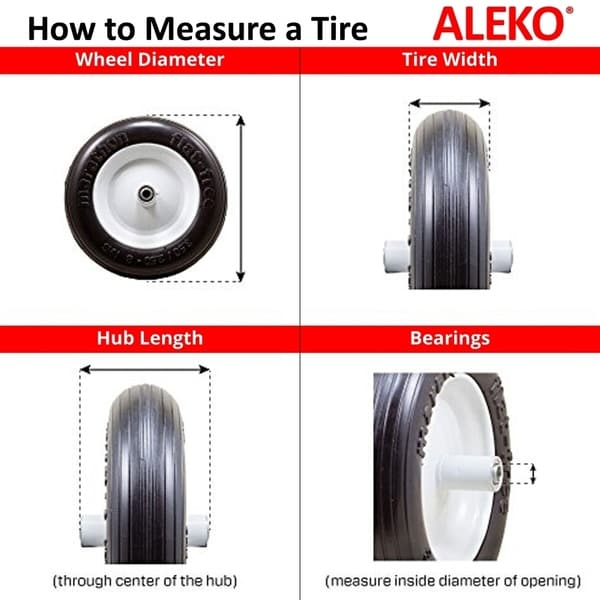
Like everywhere else, there are premium brands and there is something cheap. But cool brands have failed models, while budget brands have successful ones.
There is a lot of research and testing behind famous brand tires. Before entering the market, large companies test each new model in the most extreme conditions. Tires can be rolled on arctic ranges or in the desert.
Often, rubber is tested in the conditions of sports competitions and only then the technology is sent to the mass market. The more famous the manufacturer and the more expensive its products, the greater its budget for the development of new models.
There are also very cheap tires, often from China. They can directly write that they copied the tread pattern of a prestigious model, but this is not enough: there is also a rubber composition, cord design and other parameters.
Prices for tires of the same size may differ by multiples. The smaller the profile and the larger the width, the greater the difference.
To look at something other than the brand and choose what you need, there is an algorithm:
Specialized shops. There is a large selection, manufacturers' catalogs and competent advice. This will appeal to those who buy car tires for the first time or are simply not very interested in the technical side of cars. There is a service here - there will be a guarantee for tires, there is tire fitting and seasonal storage.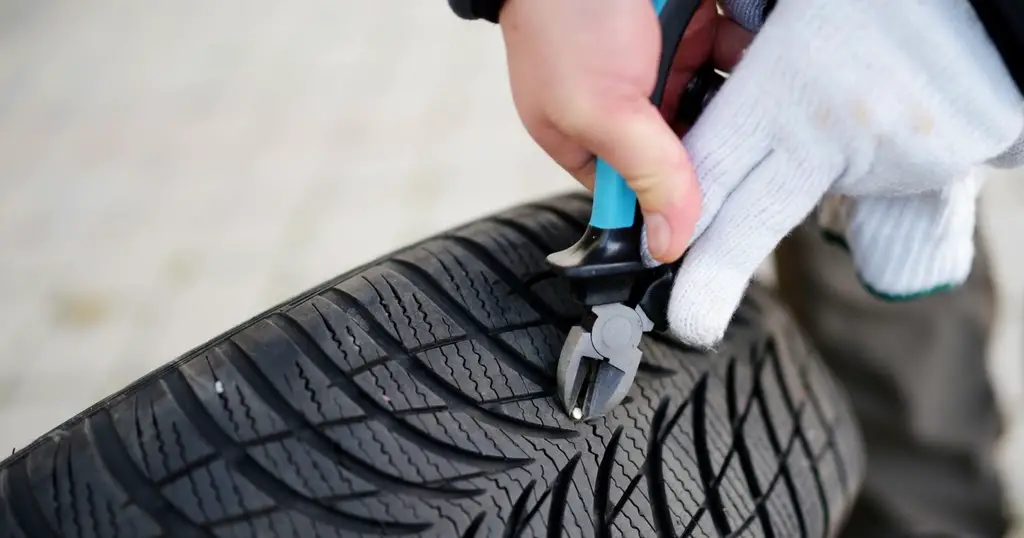 The one-stop principle works: you can arrive on spikes and leave on a new summer and with an empty trunk.
The one-stop principle works: you can arrive on spikes and leave on a new summer and with an empty trunk.
Online hypermarkets and warehouses. Rubber is sold by large Internet sites and small shops. The option is suitable for those who want to find cheaper, are ready to take risks and waste time for this. Here, the entire responsibility for checking the parameters of the tire, the date of its release and, in general, compliance with the order lies with the buyer. If something goes wrong, you will have to take all four tires to no one knows where and change them. Tire fitting and storage is the buyer's concern.
/save/mashina-hack/
How to save on car maintenance?
Flea markets, car club forums and ad services. Avito, Yulia and specialized automotive forums offer a lot of rubber. You can buy a completely fresh set at a good price, or you can buy rubbish and expensive. There is a great risk of buying tires with hidden damage: the fact that the tire is crooked will only be opened at a tire fitting, many hernias will be visible only on an inflated tire.
Sometimes the ability to measure depth and read parameters does not help. To put the correct year on an old tire, there is a special stamp. The tread depth can be machined, and a tire that is white from old age can be treated with ink.
With the help of special equipment, you can even remove the remnants of the old protector and stick a new one. It remains to hope for the reputation of the seller and look at the goods that he sells or sold. I try to avoid those who sell used rubber all the time.
First of all, the size. The larger the diameter, the more expensive. But at the same time, the lower the tire profile, the more expensive it is. This may seem counterintuitive, as less material is used.
Tire inner layers and construction play an important role. Due to the low profile height, the sidewall of such a tire must be much stronger than the same tire with a high profile.
Tire make and model affected. Rubber from large, famous brands with a century of history is more expensive, but the budget lines of well-known companies will allow you to save a lot.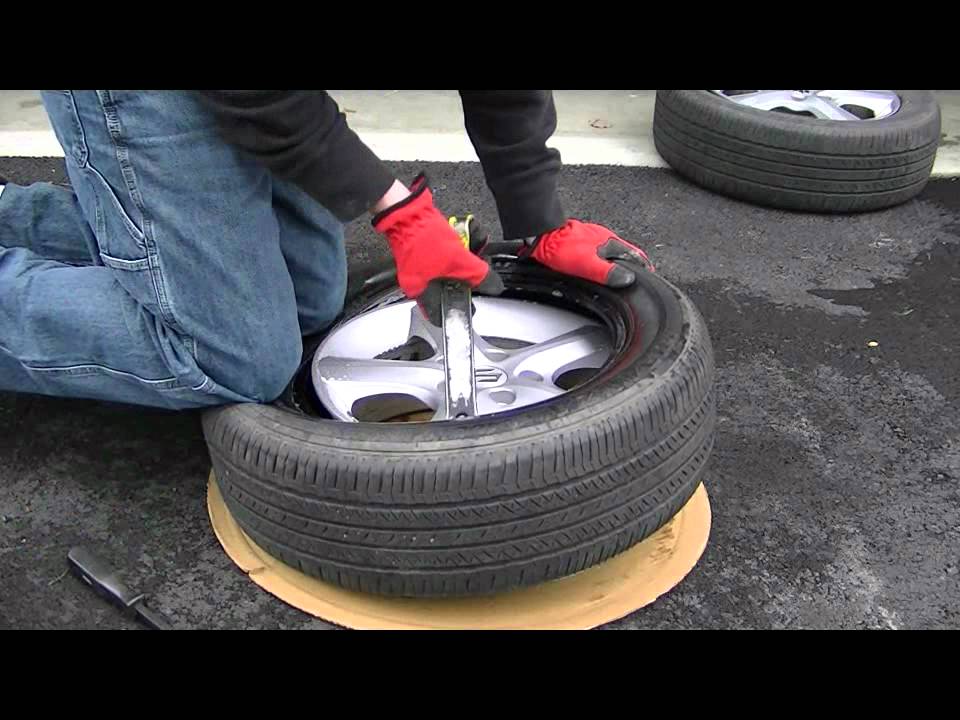 Tires of young, unknown manufacturers, especially Asian ones, will cost even less.
Tires of young, unknown manufacturers, especially Asian ones, will cost even less.
Tires with runflat technology are more expensive than conventional tires, because their sidewalls have special requirements.
Is it worth buying retreaded tires? It is almost impossible to buy such tires for a passenger car in Russia in 2021. The cord design of car tires for projector restoration is not intended, unlike truck tires, for which this is a very popular service. In some countries in Eastern Europe, you can buy retreaded tires in popular sizes, but their properties are mediocre: long braking distances, poor handling.
When is the best time to buy tires? The popular theory that tires are best bought between seasons is no longer valid. You won’t be able to save money this way: the price of tires almost does not change throughout the year.
The tire business is seasonally cyclical, and it is not worth hoping for discounts on studded tires and its wide selection in June. For the next winter season, it will be delivered in August, and summer tires in March.
For the next winter season, it will be delivered in August, and summer tires in March.
But by the season, the freshest tires will be on sale. This is true for those who drive very little, or for sports tires. The fresher the tire, the better the grip will be: the rubber compound loses its properties over time.
Always make sure that your tire pressure is correct: it is critical to tire health. If you lose pressure, do not continue driving on an empty wheel: this may destroy the tire.
Try not to store tires and the car within half a meter of heaters.
Old tires cannot simply be thrown in the trash or buried. This is hazard class 4 waste, they must be disposed of.
GOST 12.1.007-76
Tires can be sold on Avito or other ad service. It will turn out if there is no serious damage and the tread depth allows them to be used further.
Old tires are readily picked up by a tire shop.